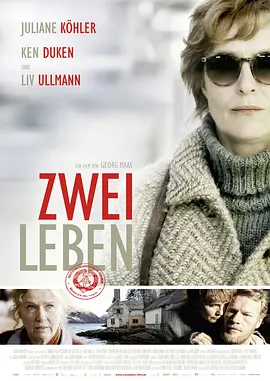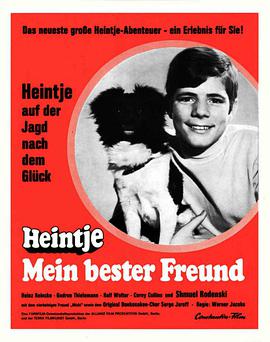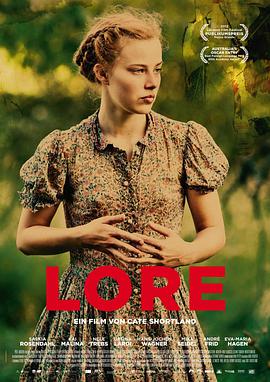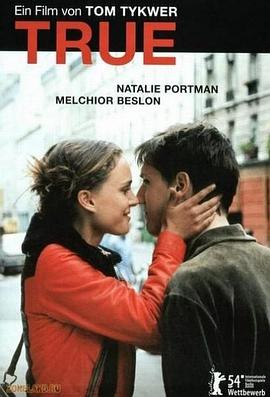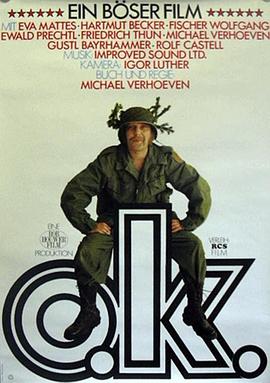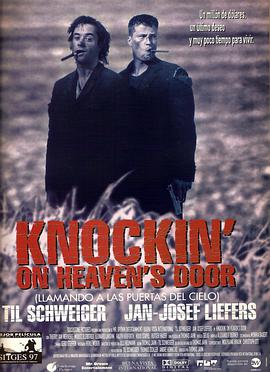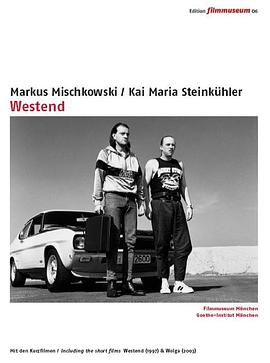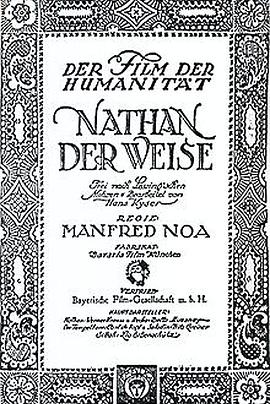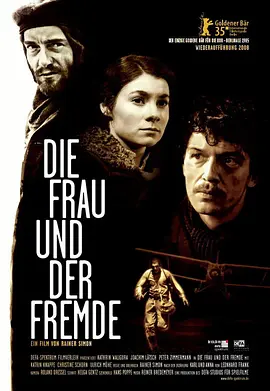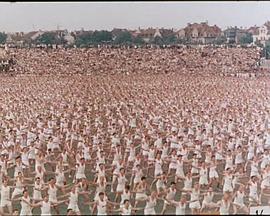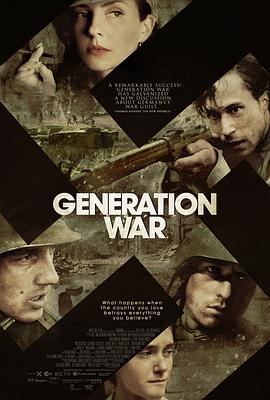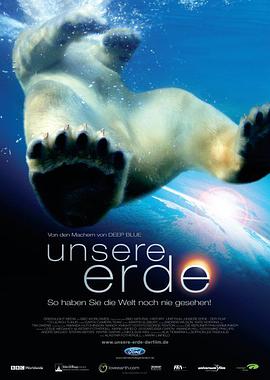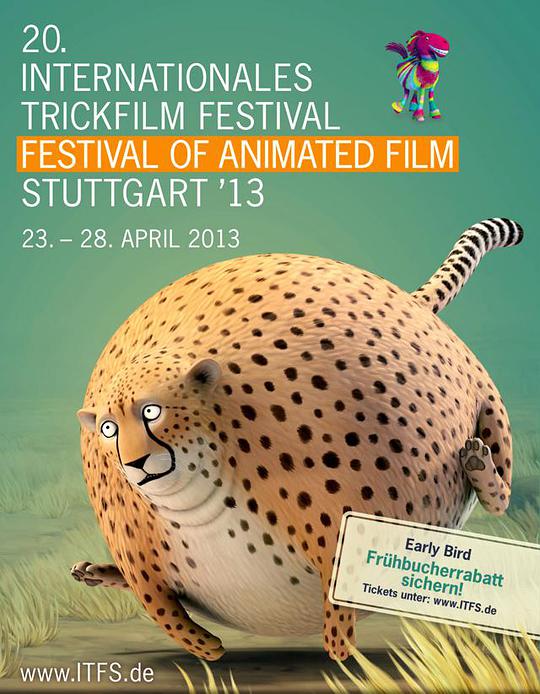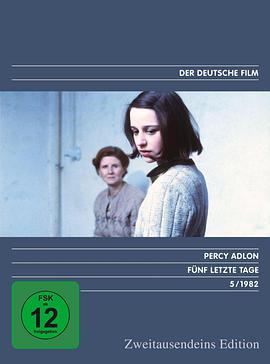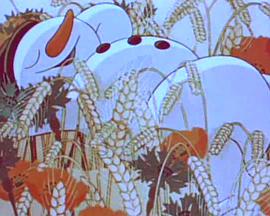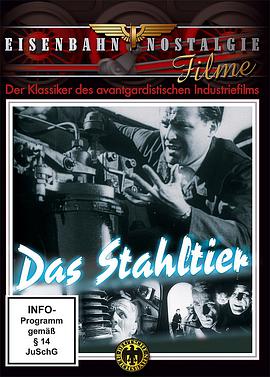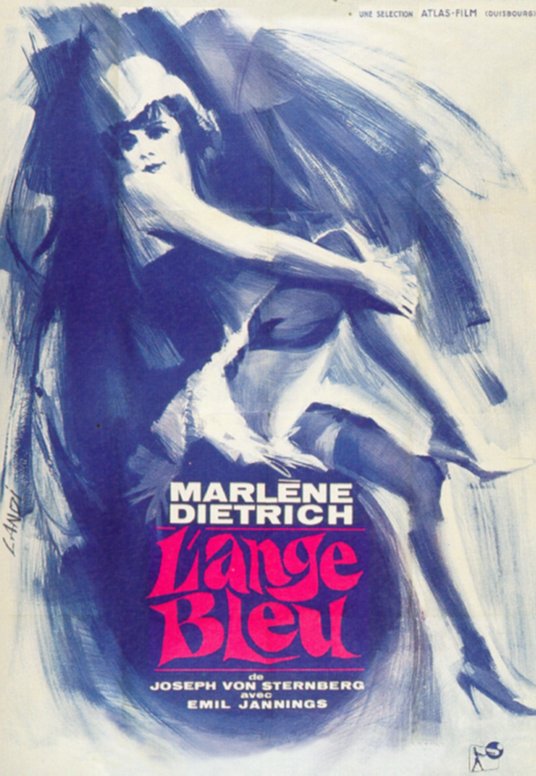德国
我最好的朋友 (1970) 豆瓣
Heintje - Mein bester Freund
导演:
Werner Jacobs
演员:
Heintje Simons
/
Gudrun Thielemann
…
其它标题:
Heintje - Mein bester Freund
/
我的好朋友
15岁的英俊少年海因切(Heintje Simons)与妈妈(Gudrun Thielemann)在德国中部一座城市靠一家花店生活,尽管平日省吃俭用,因为生意不景气,两人仍渐渐入不敷出,花店也因交不起房租面临被关门的危险。
海因切无意间看到现在汉堡的赛车手父亲(Heinz Reincke)当年驰骋赛场的照片后,决定到汉堡找寻这位早已不识自己模样的父亲,希望他能与母亲复合,为此,他利用夏令营的机会瞒着母亲来到汉堡,不想当年的英雄父亲正处于事业的低谷,为让父亲恢复昔日风采,他隐瞒自己的身份开始帮助父亲。
海因切无意间看到现在汉堡的赛车手父亲(Heinz Reincke)当年驰骋赛场的照片后,决定到汉堡找寻这位早已不识自己模样的父亲,希望他能与母亲复合,为此,他利用夏令营的机会瞒着母亲来到汉堡,不想当年的英雄父亲正处于事业的低谷,为让父亲恢复昔日风采,他隐瞒自己的身份开始帮助父亲。
少女洛荷 (2012) 豆瓣
Lore
7.5 (27 个评分)
导演:
凯特·绍特兰
演员:
莎斯琪亚·罗森道尔
/
内尔·特雷波斯
…
其它标题:
Lore
/
纯真消逝的年代(台)
…
LORE萝拉”是片中主人公Hannalore(莎斯琪亚·罗森道尔 Saskia Rosendahl 饰)的小名。故事发生在二战结束不久前的德国。萝拉是位生来养尊处优的女孩,她的父亲是一名高级党卫军军官,曾在白俄罗斯处决过大量的犹太人和无辜市民。萝拉和她的姐妹们对犹太人 的遭遇知之甚少,她甚至还是一名希特勒青年军(Hitler Youth) 的光荣成员,对纳粹信仰充满了崇敬之情。如今,希特勒已死,而德意志变成了一片废墟,在这样的环境之下萝拉开始了一段痛苦而深刻的长大成人的经历。
影片在2012年瑞典斯德哥尔摩电影节荣获最佳影片、女主角、摄影与最佳原声四项大奖。之前还曾获得Locarno观众奖以及瓦拉多利德Valladolid最佳新人导演奖。代表澳大利亚申报2013年奥斯卡外语片。
影片在2012年瑞典斯德哥尔摩电影节荣获最佳影片、女主角、摄影与最佳原声四项大奖。之前还曾获得Locarno观众奖以及瓦拉多利德Valladolid最佳新人导演奖。代表澳大利亚申报2013年奥斯卡外语片。
十区车站 (2004) 豆瓣
True
8.4 (54 个评分)
导演:
汤姆·提克威
演员:
娜塔莉·波特曼
/
梅尔基奥尔·德鲁埃
其它标题:
True
短片讲述双目失明的男孩托马斯(梅尔基奥·贝丝纶 Melchior Beslon饰)与女演员弗兰西(娜塔莉·波特曼 Natalie Portman饰)之间从相爱到分手的爱情故事。巴黎圣丹尼,初到巴黎闯荡的弗兰西正在排演角色,托马斯“邂逅”了这位迷人的女孩。虽然他看不见美丽动人的她,但他一直用心去感受弗兰西。他能看得见她曼妙的身姿,看得到她开怀的笑容。很自然的,他们相爱了。托马斯听她朗诵台词,陪她去戏剧学院上课;弗兰西陪他复习考试,跟他一起去看电影……日复一日。可幸福时光永远不会停留在不变的那刻,他们分手了。铃声响起,是弗兰西的电话。
本片为《巴黎我爱你》其中的一部短片。导演汤姆·提克威荣获2004年柏林国际电影节最佳短片提名。
本片为《巴黎我爱你》其中的一部短片。导演汤姆·提克威荣获2004年柏林国际电影节最佳短片提名。
正常 (1970) 豆瓣 TMDB IMDb 维基数据
O.K.
导演:
米夏埃尔·费尔赫芬
演员:
米夏埃尔·费尔赫芬
/
Gustl Bayrhammer
…
其它标题:
O.K.
/
O.k.
…
在越南战争的丛林,一群美国士兵遇到一个本地的年轻女孩。他们残忍地强奸和折磨她,最后杀死她。一个士兵厌恶这种不人道的行为,并向他的军官们报告这一罪行。
该片入围第20届柏林电影届主竞赛单元,遭到有军官经历的评委会主席美国导演乔治·史蒂文强烈反对,他感觉遭到影片的侮辱,希望将其逐出竞赛单元。
乔治·史蒂文的行为导致许多导演退赛、评委辞职,电影节不得不提前落幕,许多竞赛电影并没有在电影节期间完成正式放映,也没有正式颁奖。这是柏林电影节史上唯一一次提前结束。
《正常》代表德国参与了当年奥斯卡最佳外语片评选。
该片入围第20届柏林电影届主竞赛单元,遭到有军官经历的评委会主席美国导演乔治·史蒂文强烈反对,他感觉遭到影片的侮辱,希望将其逐出竞赛单元。
乔治·史蒂文的行为导致许多导演退赛、评委辞职,电影节不得不提前落幕,许多竞赛电影并没有在电影节期间完成正式放映,也没有正式颁奖。这是柏林电影节史上唯一一次提前结束。
《正常》代表德国参与了当年奥斯卡最佳外语片评选。
敲开天堂的门 (1997) 豆瓣 维基数据 IMDb TMDB
Knockin' on Heaven's Door
8.6 (78 个评分)
导演:
托马斯·雅恩
演员:
蒂尔·施威格
/
扬·约瑟夫·利费斯
…
其它标题:
Knockin' on Heaven's Door
/
战龙闯天关
…
Martin Brest(蒂尔·施威格 Til Schweiger饰)和Rudi Wurlitzer(让·约瑟夫·莱佛斯 Jan Josef Liefers 饰)是两个身患不治之症的病人,两人在医院相遇了,相谈甚欢更一起喝了一瓶偶然找到的酒。两人喝醉后,Martin知道了Rudi一个秘密:长这么大Rudi竟然还没见过大海。Martin决定在Rudi临终之前实现他这个愿望。两人偷了一辆车,不想这辆车竟然是一黑帮老大的,里面更藏有大量现金。两人还一路抢劫,被警察追捕。黑帮的人为了追回车里的钱,也在追杀他们。在寻找大海的路上,两人到底要历经多少艰险,Martin和Rudi最后能否实现看一眼大海的愿望,天堂在前,两人要去敲开天堂的大门了......
伏尔加 (2003) 豆瓣
导演:
Markus Mischkowski
/
Kai-Maria Steinkühler
演员:
Markus Mischkowski
/
Kai-Maria Steinkühler
…
Two young film makers from Cologne recklessly line themselves up in the tradition of the great director-actors. Of all great names, we need only mention Buster Keaton. This was only possible in black & white and any dialogue would be disruptive. As would any smile. Those are reserved for the audience. The film makers play Mike and Alfred, who keep themselves busy in a bar. Until suddenly a strange woman appears and orders a vodka.
智者纳旦 (1922) 豆瓣
Nathan der Weise
导演:
曼弗雷德·诺亚
演员:
维尔纳·克劳斯
/
卡尔·德福格特
…
其它标题:
Nathan der Weise
/
Erstürmung Jerusalems
Gotthold Ephraim Lessing published his "dramatic poem" in 1779 as a direct response to censure by official orthodox religious circles, to which he was subject after publishing a work by Samuel Reimarus that was critical of religion. He set his story in Jerusalem at the time of the Crusades, where Christians, Jews and Muslims were in constant and close confrontation. It threatens to end tragically in religious conflict, but the main character succeeds, with insight and shrewdness, in reconciling the religious communities. Lessing's drama is acknowledged in German literary history as a "humanist manifesto" that defends "religious tolerance and the freedom of ideas". Scriptwriter Hans Kyser adapted the drama to great cinematic effect, incorporating as a powerful prologue, the opening episode that Lessing resolved only at the end of his drama. Manfred Noa used the brutality of the Crusades and their exotic setting to stage visually impressive crowd scenes. Experienced actors from box-office hits were magnificent in the leading roles, among them Werner Krauss (Das Cabinet des Dr. Caligari / The Cabinet of Dr. Caligari by Robert Wiene) as Nathan, and Carl de Vogt (Die Spinnen / The Spiders by Fritz Lang) as a young Templar knight. As in the original drama, this emotionally charged production ends in an impassioned plea for reason and for tolerance towards people of other faiths.
On 21st September 1922 the film, Nathan der Weise was submitted for assessment to the Munich Board of Film Censors (Filmprüfstelle München) which withheld approval of its release because the film "appears extraordinarily suited to jeopardizing public order and security". The second chamber of the Munich Board of Film Censors reached a different verdict: "It [the chamber] agreed with the assessment insofar as the time of the film's release is the least favourable imaginable, and that perhaps though not probably misled rowdies in places strongly characterised by anti-Semitism might riot, yet it accordingly found that any blame for this lies not with the film but rather, with people's improper attitudes and that, ultimately, banning the film would be no protection against the excesses of such people". The chairman however, instantly lodged a complaint about the chamber's approval of the film's release with the Supreme Board of Film Censors (Oberprüfstelle) in Berlin, arguing that the chamber "had not taken sufficient account of the clearly formulated and unambiguous assessment by experts".
Before the Supreme Board of Film Censors had reviewed the initial verdict, hostility towards the film continued in Munich, where it had not yet been released. The magazine Lichtbildbühne reported "attempts by Nazi sympathisers to destroy the negative " in October 1922, which were however obviously unsuccessful. On 28th December 1922, the Supreme Board of Film Censors dismissed the appeal against the Munich Board of Film Censor's verdict and stressed that, should an "anti-Semitic hate campaign" occur, this would be due to motives "that have been arbitrarily attributed to the film's content by external sources. Should, for such reasons, public order later be jeopardized, this danger can be averted (...) not by censorship legislation (the Lichtspielgesetz) requiring withdrawal of the film, but only by police intervention".
Nathan der Weise was eventually premiered on 29th December 1922 in Berlin's Alhambra cinema, located on the Kurfürstendamm. The advertising campaign introduced the film under the slogan, "the film of humanity". On 28th January 1923, the trade publication Der Kinematograph carried a full-page announcement detailing the film's success: "The spontaneous wild applause at the end of the film proved without a shadow of doubt that the prevailing mood is unambiguous" (in Film-Echo); "It was heart-rending, true humaneness that motivated the audience to spontaneous applause in the middle of the scene" (in the newspaper B.Z. am Mittag).
In Munich, the "capital of the [Nazi] movement", attempts to hinder the film's release had not yet been forgotten when Nathan der Weise was programmed to run on 9th February 1923 at a local cinema, Regina-Lichtspiele. Although as a precaution publicity had been avoided, the first threatening letters arrived that very afternoon. The cinema owner received a phone call that evening, warning him that, "if the film is not removed from the programme, 'his place will be smashed to pieces tomorrow night'". The owner, concerned for his expensively equipped cinema, then turnedto Bavaria-Film. The February 1923 issue of Lichtbildbühne reported that, "Director Hoppe from Bavaria (...) hastily called a meeting with the appropriate persons. Being aware of the danger and from what source it was to be expected, it was decided to get in direct contact with the Party leader, Hitler. In place of Hitler, a certain Mr. Esser, his deputy, received the gentlemen. Director Hoppe declared himself ready to organise a special screening of the film for Mr. Esser, in order that the latter might be personally assured that the film was free of the tendencies attributed to it. (...) After the screening, Esser expressed the opinion that the film was propaganda and was insistent on this point, despite attempts by Director Hoppe to refute it". In the newspaper Völkischer Beobachter of 16th February 1923, a certain H.E. wrote about the "Jewish infiltration" of the German film industry: "The film that was presented to us yesterday by the Emelka Group is a one-sided, cleverly-made, and without question, technically brilliant film that for these very reasons, is even more effective in communicating its propaganda. Twisting the facts, it aims to force upon the population of Munich, the stronghold of the anti-Semitic movement, the opinion that Judaism is superior to and more humane than Islam and Christianity, and that the fight against Judaism is the most abominable injustice in world history. In this time of the most brutal suppression of the mostbasic human rights by an enemy whipped into furies of vengeance, it is a crime to employ such a truly Jewish creation, oozing with dishonest and hypocritical humanity, to forcibly drive out of the German people the last remnants of their will to rid themselves of slavery." Subsequently no cinema owner in Munich dared to show the film again. Evidence of a public screening exists only for October 1930.
The film Nathan der Weise experienced difficulties abroad too. Censors in Warsaw banned it in 1923 because it portrayed the "humanitarian role of Judaism [...] which might at the present time, in view of the execution in Moscow of Budkiewicz, a Catholic priest, provoke undesirable memories". In Austria, it was released on 21st September 1923 under the title Die Träne Gottes (The Tears of God) and banned in schools. There are no records of the film being shown again after Hitler seized power. In his history of cinema, Vom Werden deutscher Filmkunst (The Development of German Film, 1935), Oskar Kalbus called it a "typically Jewish-influenced film" and claimed it was merely a "didactic costume drama". After that, the director and his film fell into oblivion. Lessing's drama has never again been adapted for the screen to this day.
The Filmmuseum München discovered the film in 1996 under the title Die Erstürmung Jerusalems (The Storming of Jerusalem), in the collection of Gosfilmofond in Moscow. The Russian film archive had made a black-and-white duplicate negative of a tinted nitrate print that no longer exists. The original title was missing and new chapter titles had been arbitrarily insertedfaults that the Filmmuseum München corrected as well as it recreated the colour tints.
On 21st September 1922 the film, Nathan der Weise was submitted for assessment to the Munich Board of Film Censors (Filmprüfstelle München) which withheld approval of its release because the film "appears extraordinarily suited to jeopardizing public order and security". The second chamber of the Munich Board of Film Censors reached a different verdict: "It [the chamber] agreed with the assessment insofar as the time of the film's release is the least favourable imaginable, and that perhaps though not probably misled rowdies in places strongly characterised by anti-Semitism might riot, yet it accordingly found that any blame for this lies not with the film but rather, with people's improper attitudes and that, ultimately, banning the film would be no protection against the excesses of such people". The chairman however, instantly lodged a complaint about the chamber's approval of the film's release with the Supreme Board of Film Censors (Oberprüfstelle) in Berlin, arguing that the chamber "had not taken sufficient account of the clearly formulated and unambiguous assessment by experts".
Before the Supreme Board of Film Censors had reviewed the initial verdict, hostility towards the film continued in Munich, where it had not yet been released. The magazine Lichtbildbühne reported "attempts by Nazi sympathisers to destroy the negative " in October 1922, which were however obviously unsuccessful. On 28th December 1922, the Supreme Board of Film Censors dismissed the appeal against the Munich Board of Film Censor's verdict and stressed that, should an "anti-Semitic hate campaign" occur, this would be due to motives "that have been arbitrarily attributed to the film's content by external sources. Should, for such reasons, public order later be jeopardized, this danger can be averted (...) not by censorship legislation (the Lichtspielgesetz) requiring withdrawal of the film, but only by police intervention".
Nathan der Weise was eventually premiered on 29th December 1922 in Berlin's Alhambra cinema, located on the Kurfürstendamm. The advertising campaign introduced the film under the slogan, "the film of humanity". On 28th January 1923, the trade publication Der Kinematograph carried a full-page announcement detailing the film's success: "The spontaneous wild applause at the end of the film proved without a shadow of doubt that the prevailing mood is unambiguous" (in Film-Echo); "It was heart-rending, true humaneness that motivated the audience to spontaneous applause in the middle of the scene" (in the newspaper B.Z. am Mittag).
In Munich, the "capital of the [Nazi] movement", attempts to hinder the film's release had not yet been forgotten when Nathan der Weise was programmed to run on 9th February 1923 at a local cinema, Regina-Lichtspiele. Although as a precaution publicity had been avoided, the first threatening letters arrived that very afternoon. The cinema owner received a phone call that evening, warning him that, "if the film is not removed from the programme, 'his place will be smashed to pieces tomorrow night'". The owner, concerned for his expensively equipped cinema, then turnedto Bavaria-Film. The February 1923 issue of Lichtbildbühne reported that, "Director Hoppe from Bavaria (...) hastily called a meeting with the appropriate persons. Being aware of the danger and from what source it was to be expected, it was decided to get in direct contact with the Party leader, Hitler. In place of Hitler, a certain Mr. Esser, his deputy, received the gentlemen. Director Hoppe declared himself ready to organise a special screening of the film for Mr. Esser, in order that the latter might be personally assured that the film was free of the tendencies attributed to it. (...) After the screening, Esser expressed the opinion that the film was propaganda and was insistent on this point, despite attempts by Director Hoppe to refute it". In the newspaper Völkischer Beobachter of 16th February 1923, a certain H.E. wrote about the "Jewish infiltration" of the German film industry: "The film that was presented to us yesterday by the Emelka Group is a one-sided, cleverly-made, and without question, technically brilliant film that for these very reasons, is even more effective in communicating its propaganda. Twisting the facts, it aims to force upon the population of Munich, the stronghold of the anti-Semitic movement, the opinion that Judaism is superior to and more humane than Islam and Christianity, and that the fight against Judaism is the most abominable injustice in world history. In this time of the most brutal suppression of the mostbasic human rights by an enemy whipped into furies of vengeance, it is a crime to employ such a truly Jewish creation, oozing with dishonest and hypocritical humanity, to forcibly drive out of the German people the last remnants of their will to rid themselves of slavery." Subsequently no cinema owner in Munich dared to show the film again. Evidence of a public screening exists only for October 1930.
The film Nathan der Weise experienced difficulties abroad too. Censors in Warsaw banned it in 1923 because it portrayed the "humanitarian role of Judaism [...] which might at the present time, in view of the execution in Moscow of Budkiewicz, a Catholic priest, provoke undesirable memories". In Austria, it was released on 21st September 1923 under the title Die Träne Gottes (The Tears of God) and banned in schools. There are no records of the film being shown again after Hitler seized power. In his history of cinema, Vom Werden deutscher Filmkunst (The Development of German Film, 1935), Oskar Kalbus called it a "typically Jewish-influenced film" and claimed it was merely a "didactic costume drama". After that, the director and his film fell into oblivion. Lessing's drama has never again been adapted for the screen to this day.
The Filmmuseum München discovered the film in 1996 under the title Die Erstürmung Jerusalems (The Storming of Jerusalem), in the collection of Gosfilmofond in Moscow. The Russian film archive had made a black-and-white duplicate negative of a tinted nitrate print that no longer exists. The original title was missing and new chapter titles had been arbitrarily insertedfaults that the Filmmuseum München corrected as well as it recreated the colour tints.
女人和陌生人 (1985) 豆瓣
Die Frau und der Fremde
导演:
莱纳·西蒙
演员:
Joachim Lätsch
/
Peter Zimmermann
…
其它标题:
Die Frau und der Fremde
/
没有见过女人的男人
…
该片是民主德国唯一一部摘夺柏林金熊奖的影片:德国士兵理查德和卡尔在一战中遭俄国人俘虏,因为成为了亲密无间的朋友。理查德经常向卡尔谈到家中的妻子安娜,通过这些故事,卡尔的脑海中已然爱上了她。当卡尔独自潜逃并来到理查德家中,安娜明知他并非自己的丈夫,并试图抵抗后者的爱,却仍旧未能阻止爱情在两人之间的滋生。不料战争结束后,理查德也终于返回了故乡,三人由此陷入了艰难境地。(小易甫字幕组)
我们的父辈 (我们的母亲,我们的父亲) (2013) 豆瓣 TMDB
Unsere Mütter, unsere Väter Season 1 所属 电视剧集: 我们的父辈
9.5 (476 个评分)
导演:
菲利普·卡德尔巴赫
演员:
汤姆·希林
/
沃尔克·布鲁赫
…
1941年,德军准备入侵苏联,德国男青年Wilhelm和他的弟弟Friedhelm响应希特勒的号召应征入伍,即将奔赴前线。女青年Charlotte立志为国家服务,成了一名女护士,也将前往战场救助伤员。女青年Greta美丽活泼,歌声动人,她希望有朝一日成为一名女歌星。她的情人是一个犹太人Viktor,他是一名裁缝的儿子。五人是最好的朋友,他们在启程的前夜载歌载舞,喝酒庆祝,约定圣诞节再相聚。
分离之前,他们都是意气风发的年轻人;分离之后,他们的命运便和这场战争紧紧联系在一起。对于这一辈的德国人来说,这是他们的父辈、他们的母辈对于这场战争的记忆。
分离之前,他们都是意气风发的年轻人;分离之后,他们的命运便和这场战争紧紧联系在一起。对于这一辈的德国人来说,这是他们的父辈、他们的母辈对于这场战争的记忆。
如果动物界都是胖子 (2013) 豆瓣
Rollin' Wild
9.1 (125 个评分)
导演:
FMX 2013
想象一下,如果非洲大草原上我们所熟悉的那些动物都变成了圆滚滚的胖子,而且还是充满了气的胖子,会呈现出怎样的景象?池塘中红色火烈鸟单腿立在水中央,细细的腿配上圆圆的身子仿佛是一堆粉红色的气球。掠食者鳄鱼正在逼近!小心!不过却也别太担心。尘土飞扬的草原上,胖猎豹在追逐胖瞪羚,好吧你不会看到电视里那些捕食的经典画面,因为这两个呆萌货自有爆笑的表演。几匹非斑马在池塘边喝水,通常猎食者会悄然靠近,而它们还全然不知。肥胖版的大草原上,真是什么都可能发生……
本片为2013年第20届斯图加特国际动画节宣传动画。
本片为2013年第20届斯图加特国际动画节宣传动画。
最后五天 (1982) 豆瓣
Fünf letzte Tage
导演:
柏西·艾德隆
演员:
伊尔姆·赫尔曼
/
莱娜·施托尔策
…
其它标题:
Fünf letzte Tage
/
最后五夜
…
In Wittelbacherpalais, Munich's prison and Gestapo center, middle-aged Else Gebel awaits trial for carrying anti-Nazi material. She serves as a clerk in the Gestapo office. On Thursday, 18 February 1943, two youths arrive at the prison, arrested for carrying anti-Reich pamphlets and suspected of dropping leaflets from the university tower and painting anti-Hitler signs along Ludwigstraße: Sophie, 21, and her brother Hans, 24 and back from the Russian front. Sophie is housed with Else, and for five days, as Sophie is interrogated and charges brought, the women form a bond based on simple interactions: poetry, tea, shared clothing, courage, love of freedom, and a promise Else gives Sophie.
战争之子 (2006) 豆瓣
Warchild
导演:
Christian Wagner
演员:
Labina Mitevska
/
Senad Basic
…
其它标题:
Warchild
南斯拉夫中西部地区的波斯尼亚——黑塞哥维那
在战乱之际,年轻的母亲塞娜达塞失去了自己两岁的孩子艾达。时间至今已经过去10年,失踪的女孩一直还未找到,但是塞娜达依然没有放弃希望认定她还活着。为了找回女孩,她寻找了任何能够得到的含糊不清的线索。终于她的预感得到了证实。艾达与收养她的父母生活在德国。塞娜达非法越过边境然后找到了收养她孩子的这家人。原以为父母已经被杀害,海内利斯夫妇就带走了小女孩,并给她取名叫克里斯蒂娜。这家人被新闻上的报道震惊了,她的亲生母亲要求把孩子还给她。但是这对德国夫妻并不打算轻易放弃,认为女孩已经在新家庭完全扎根下来,而且对自己祖国几乎没有任何记忆。塞娜达也必须下定决心……
一句话评论:
克里斯汀·瓦格纳的电影基于一个真实故事,在很多地方都有这样的事情发生,战争期间孩子与父母分离然后在另一个不同的国家被收养。与此同时影片中的影像是令人不安的、阴冷而且独特。《战争之子》讲述了一个感人肺腑的故事,值得所有人去观赏。
——《电影电影》
一部杰出的电影!
——德国《南德日报》
影片对现代欧洲历史上一个特殊时期作出具有价值的贡献和意义,虽然与今天相距不远,但提醒人们要记住那不会太遥远。
——引自获得巴伐利亚电影节特别评审奖评委陈词
花絮:
·克里斯汀·瓦格纳的影片《战争之子》,获得2006年蒙特利尔电影节最佳剧本奖以及巴伐利亚电影节评审团特别奖等多个国际电影节奖项。
在战乱之际,年轻的母亲塞娜达塞失去了自己两岁的孩子艾达。时间至今已经过去10年,失踪的女孩一直还未找到,但是塞娜达依然没有放弃希望认定她还活着。为了找回女孩,她寻找了任何能够得到的含糊不清的线索。终于她的预感得到了证实。艾达与收养她的父母生活在德国。塞娜达非法越过边境然后找到了收养她孩子的这家人。原以为父母已经被杀害,海内利斯夫妇就带走了小女孩,并给她取名叫克里斯蒂娜。这家人被新闻上的报道震惊了,她的亲生母亲要求把孩子还给她。但是这对德国夫妻并不打算轻易放弃,认为女孩已经在新家庭完全扎根下来,而且对自己祖国几乎没有任何记忆。塞娜达也必须下定决心……
一句话评论:
克里斯汀·瓦格纳的电影基于一个真实故事,在很多地方都有这样的事情发生,战争期间孩子与父母分离然后在另一个不同的国家被收养。与此同时影片中的影像是令人不安的、阴冷而且独特。《战争之子》讲述了一个感人肺腑的故事,值得所有人去观赏。
——《电影电影》
一部杰出的电影!
——德国《南德日报》
影片对现代欧洲历史上一个特殊时期作出具有价值的贡献和意义,虽然与今天相距不远,但提醒人们要记住那不会太遥远。
——引自获得巴伐利亚电影节特别评审奖评委陈词
花絮:
·克里斯汀·瓦格纳的影片《战争之子》,获得2006年蒙特利尔电影节最佳剧本奖以及巴伐利亚电影节评审团特别奖等多个国际电影节奖项。
钢铁猛兽 (1935) 豆瓣
Das Stahltier
导演:
Willy Zielke
演员:
Aribert Mog
其它标题:
Das Stahltier
Willy Zielke has made DAS STAHLTIER (the steel animal) for the 100th anniversary of the German railway. It wasn't shown in 1935! To forbid this treasure of a film tells you all about the completely intolerant behavior of the Nazi regime. And that obviously just because Zielke tells the truth: That the steam locomotive was an English invention. The story seems anything but a way to present film art: The main character (Aribert Mog) tells 5 railway workers the tale of steam and its taming in the form of historic episodes. For years I have waited to see a complete version of the film and not the crippled (and therefore illogical) thing which was available on VHS. Now I can say that the film was far ahead of its time concerning film technique. On the one hand there are many artful dissolves, ultra-fast cuts and inclined pictures, on the other hand there are these wonderful episodes, which are told in a rather calm, but all the more impressive way. The way how the replicas of the original machines has been set in motion is absolutely great, but what I admire the most is how Zielkes camera has captured all the human emotions in those many wonderful character faces. And not to forget: the music by famous composer Peter Kreuder creates always a perfect mood.
The film was commissioned by the Reich's Railway Services, to commemorate the 150th anniversary of the first German railroad, the line Nürnberg-Fürth. The (working) replica of the 1906 steam train cost 18 000 Goldmark (equivalent to 250 000 Euro in 2006). The scenes with the steam train running on tracks, as well as the scenes with replicas of historical engines dating to the 17th century were filmed on the Museum Island (Munich).
Leni Riefenstahl discovered Zielke's talents watching "Das Stahltier" and hired him for her Olympia-project. Zielke was not favored by the Nazis, "Das Stahltier" was never shown in the cinemas - and he also had problems working together with Riefenstahl. In 1937 he was brought into a sanatorium and sterilized. In 1942 Riefenstahl needed a cameraman for "Tiefland" and made sure Zielke was set free again. Zielke recieved 5000 Deutsche Mark (about 2500 Euro) as a compensation for the forced sterilization in 1987 and died two years later.
Ironically, in view of the paragraph above, Das Stahltier was conceived by the Nazis as an all-out propaganda film. They wanted a tribute to the upgraded efficiency of the German railroads, led up to by a general history of the invention and development of locomotives. The project was turned over to Willy Zielke, a superb documentarian director/cinematographer, who also created the wonderful prologue to Leni Riefenstahl's Olympiad. He was apparently given a free hand and a remarkably generous budget, allowing for the recreation of full-scale working models. When, after a lengthy production and editing process, the completed film was ready, the Nazis were greatly displeased. Far from boosting national pride, it gave far too much credit to the British - already earmarked as a potential enemy - and in addition was considered to be vaguely communistic, because of the camaraderie shown between railroad workers. Whether German audiences would have reacted to these subtleties will never be known, as the Nazis promptly banned the film from release, and threw Zielke into an asylum, thus nipping in the bud a career that might have been made with this film. (On ultimate release, he did go back to making documentaries and industrials, but the momentum had been interrupted). Riefenstahl was also anxious not to have the film shown, since it made Zielke too much of a competitor in a field of film-making that was pretty exclusively hers by that time.
It's a stunning achievement in documentary, its cutting and imagery making it almost surreal at times. Like so many German films from Metropolis on, it is fascinated with machinery and the opportunity it offers for fluidity in camera mobility and editing. The imagery is so dynamic that continuity hardly matters, but such plot as it has concerns a designer/engineer (the film's only "star", played by Aribert Meg, the leading man to Hedy Lamarr in Extase) engaged in researching the history of locomotion. Dialogue, which is minimal, is mainly important in pin-pointing the dates and events (more important to railroading buffs, who know it all anyway) though occasionally there are some interesting moments in which the poetry of language matches that of image. Particularly interesting is one scene in which the engineer likens the locomotive to the human body, oil being equated with blood, the engine with the heart, etc. Obviously, with a knowledge of German the film will seem even better, but even without it (and clearly this is not the kind of film that can be given a synopsis) the imagery is so exciting and generally self-explanatory that you'll have no trouble following it.
The film was commissioned by the Reich's Railway Services, to commemorate the 150th anniversary of the first German railroad, the line Nürnberg-Fürth. The (working) replica of the 1906 steam train cost 18 000 Goldmark (equivalent to 250 000 Euro in 2006). The scenes with the steam train running on tracks, as well as the scenes with replicas of historical engines dating to the 17th century were filmed on the Museum Island (Munich).
Leni Riefenstahl discovered Zielke's talents watching "Das Stahltier" and hired him for her Olympia-project. Zielke was not favored by the Nazis, "Das Stahltier" was never shown in the cinemas - and he also had problems working together with Riefenstahl. In 1937 he was brought into a sanatorium and sterilized. In 1942 Riefenstahl needed a cameraman for "Tiefland" and made sure Zielke was set free again. Zielke recieved 5000 Deutsche Mark (about 2500 Euro) as a compensation for the forced sterilization in 1987 and died two years later.
Ironically, in view of the paragraph above, Das Stahltier was conceived by the Nazis as an all-out propaganda film. They wanted a tribute to the upgraded efficiency of the German railroads, led up to by a general history of the invention and development of locomotives. The project was turned over to Willy Zielke, a superb documentarian director/cinematographer, who also created the wonderful prologue to Leni Riefenstahl's Olympiad. He was apparently given a free hand and a remarkably generous budget, allowing for the recreation of full-scale working models. When, after a lengthy production and editing process, the completed film was ready, the Nazis were greatly displeased. Far from boosting national pride, it gave far too much credit to the British - already earmarked as a potential enemy - and in addition was considered to be vaguely communistic, because of the camaraderie shown between railroad workers. Whether German audiences would have reacted to these subtleties will never be known, as the Nazis promptly banned the film from release, and threw Zielke into an asylum, thus nipping in the bud a career that might have been made with this film. (On ultimate release, he did go back to making documentaries and industrials, but the momentum had been interrupted). Riefenstahl was also anxious not to have the film shown, since it made Zielke too much of a competitor in a field of film-making that was pretty exclusively hers by that time.
It's a stunning achievement in documentary, its cutting and imagery making it almost surreal at times. Like so many German films from Metropolis on, it is fascinated with machinery and the opportunity it offers for fluidity in camera mobility and editing. The imagery is so dynamic that continuity hardly matters, but such plot as it has concerns a designer/engineer (the film's only "star", played by Aribert Meg, the leading man to Hedy Lamarr in Extase) engaged in researching the history of locomotion. Dialogue, which is minimal, is mainly important in pin-pointing the dates and events (more important to railroading buffs, who know it all anyway) though occasionally there are some interesting moments in which the poetry of language matches that of image. Particularly interesting is one scene in which the engineer likens the locomotive to the human body, oil being equated with blood, the engine with the heart, etc. Obviously, with a knowledge of German the film will seem even better, but even without it (and clearly this is not the kind of film that can be given a synopsis) the imagery is so exciting and generally self-explanatory that you'll have no trouble following it.
